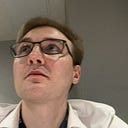Charlene Polege on Human Resources
*Interview conducted August 25, 2017.*
Scott Douglas Jacobsen: What is your name and position?
Charlene Polege: Charlene Polege, Chief Human Resources Officer, Athabasca University.
Jacobsen: You have been here 4 weeks. How did you find AU? Why did you choose it?
Polege: Oh! That’s a good question. I had been in Vancouver and had an opportunity to make a career shift. My sons are here. They are both going to university. Athabasca University came across as an opportunity through my network, actually. It resonated with me, chiefly, because of the purpose. I am a huge believer in what Athabasca University stands for: post-secondary education and the ability and opportunity is a right for everyone. Although, there is not a vehicle for everyone. Athabasca University provides that. By doing that, it provided me, at this point in my career, to perform HR in an organizations that has a strong purpose.
Jacobsen: With regards to your position, what tasks and responsibilities come along with it?
Polege: That’s a great question, because I am still figuring it out. The great thing aside from leading the HR team and HR function is really engaging relationships within the university. There’s the culture within the university. There are those of us who work in the university, and our engagement and commitment to it. That’s what I was saying earlier to our core purpose. Part of my role would be to helpall of us connected to that and those of us who have that same passionate drive, so working with our union partners ad real community relationship internal to the university as well as external and the government and processes that come along with that.
Jacobsen: What is your general strategy for engaging those relationships internal to the university?
Polege: One of my key deliverables is to create a strategic HR plan. That’s where it will be fleshed out moreso. Initially, really just getting out there and meeting people, starting with my tea, also, it is pushing out and attending as many sessions or as many meetings, committees, working with our union partners. We’ve madea purpose and a point of connecting with the union leadership. We have a meeting with AUPE next week. So, establishing that relationship, being open, visible, and available, over time, I am a big believer in storytelling. There’ll be a significant component of communication and increasing communication. Not one-way but two-way communication.
Jacobsen: In terms of narrative-building, what do you mean particularly by that?
Polege: I don’t know if I have an answer for that. I think I am too new in to contextualize that, yet.
Jacobsen: If students want help through human resources, what are their common asks, queries?
Polege: Again, I haven’t really seen that side of it, yet. I have really been orienting myself to our processes and our people, internally. Certainly, I see HR as a whole as a service. So, we provide a service to all of our clients of whom would be students. Some of that governance that we talk about also includes oversight form the students. In particular, in my previous role, it would be things like privacy, health and safety, diversity is a huge component. I know it has been big in the university and something in HR that we contribute to. So, I think from a student perspective as much as I would like to have a definitive answer. I am still getting orienting, which is still something we need to get better at. We have to get better at onboarding people as they get into the organization, which leads me to how does HR orient with the orientation of students in AU and what is available for them. So, they are getting the full benefit of what the academy can offer.
Jacobsen: How do you want to build that culture and diversity and another term that comes along with that, inclusivity, with people working with you and to build a more robust system to help orient systems to the AU culture and system?
Polege: So, more that will be fleshed out in the strategic HR plan. You have those tenets in your plan. Diversity and inclusion as a fundamental belief, certainly in mind, is that there iscertainly strength in that diversity. People are welcomed in, assessed, and contribute based on themselves as individuals. So, we need to do a better job from an HR perspective in the community, in the university community. We need to make sure we are breaking down barriers that may be. The biggest component of that is taking off our lenses and looking for those barriers and listening to what people have to say, staff and students. Because, often, barriers to inclusivity are not known, not seen. You can’t see them. It is not until you really start to digress into conversations and experiences that you really start to see them come to life amd be able to see plans.
Jacobsen: Any final thoughts?
Polege: I am really excited. It is my first time working in a university. The environment is very different. It is really exciting. I am looking forward to reducing and going along with the transformation that the university is embarking on.
Jacobsen: Thank you for your time.
Polege: [Laughing] Those were hard questions.
Jacobsen: [Laughing].
